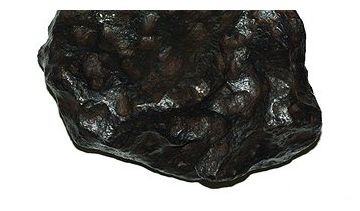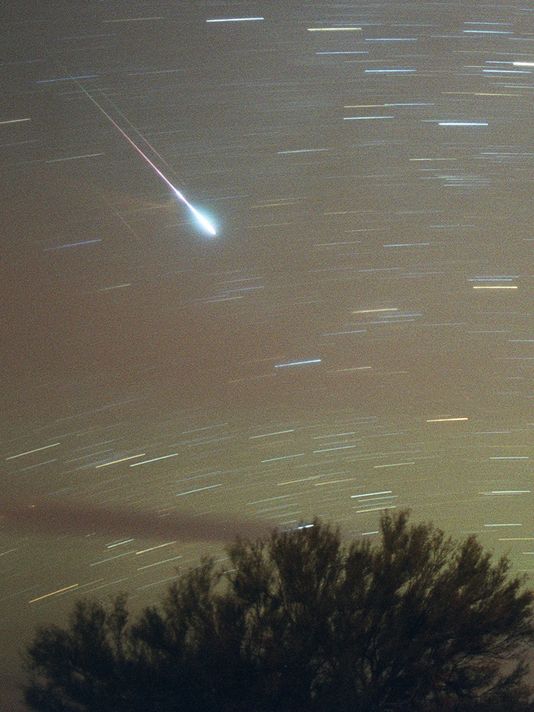Bob Ryan was driving to get a cup of coffee in Sterling, Va., on Thursday morning when he saw rocks the size of baseballs shower out of the sky.
"They hit, and then smaller ones hit in succession like, 'boom, boom, boom,'" Ryan said.
At first, Ryan thought maybe kids hiding in a treeline were pelting cars. But
he noticed that the rocks appeared to have rained down from the clouds, as if they were meteors.
Laura Rinhart, a Loudoun County firefighter, said that the rocks likely were not from outer space and had instead come flying from a nearby rock quarry. Rinehart said that some rocks struck a home on Old Ox road and debris also hit the pavement near Oakgrove Rd.
A person who answered the phone at Loudoun Quarries on Thursday said
he was not sure if the rocks came from their quarry, the only quarry in the area.
Some residents in the area heard a boom at around 10:30 a.m. that they thought sounded like thunder. Ryan said that stones then blasted car windows and damaged vehicles in a shopping center parking lot.
He said he picked up some of the rocks and noticed that they had a burnt smell.
"One rock double the size of a softball was sitting on the sidewalk in front of a beauty salon," Ryan said. "If it had gone through there would have been lots of casualties."
Comment: This story is a bit farfetched and reads like damage control. Here's another piece from
USA Today with video of a rock coming from the sky.
Would a controlled blast also create a burnt smell on the rocks?
The smell that is being given off by this meteorite is hard to describe. When I first smelt it, I tried to think of the proper words to describe the odor. I tried to think of things that had a similar smell:
"like hot metal, or like a cast-iron skillet that has over-heated, or like the metal filaments when you first turn on an electric heater.
Also, a lot like when you make sparks by striking two flint-rocks against each other.
Maybe a little like ozone, but with a more smoky, sulfurous aroma."
That's when the phrase "burnt gunpowder" came into my mind.
Source: Meteorite Times
And...
Chelyabinsk. Meteor Smells
A group of four observers of the Leonid meteor shower of 1833 reported a peculiar odour, "like sulphur or onions."
It was thought that "This apparent transmission of smells at the speed of light could be explained if they were due to nitrous oxide or ozone produced by an electric discharge." (Ozone [O3] a gas. From the Greek, ozein, for smell). Observers of the Texas fireball of 1 October 1917 also reported the odour of sulphur and burning powder as it passed.
A possible explanation is suggested by the following Chelyabinsk observer reports.
Field survey reports of smells were concentrated in the area surrounding the fireball trajectory. After an initial strong burst, the smells continued for a few hours. The eastern edge of this area coincides with the eastern edge of the glass damaged area. Arkhangel'skoe is the most western village where smells were reported. It is situated near the western edge of the glass damaged area. Fourteen villages reported similar smells, with nearly all described as a sulphur smell, a burning smell, or a smell similar to that of gunpowder.
These smells may have originated from the decomposition of Troilite (FeS), an iron sulphide mineral named after Domenico Troili, who first noted it in a meteorite that fell at Albareto, Modena, Italy in 1766. Troilite is one of the main components of the Chelyabinsk meteorite. Some burning smells may also have been caused locally when the shockwave dispersed soot from flues and stoves.
Respondents in Emanzhelinka, immediately under the fireball trajectory, also reported an ozone smell, similar to the smell after a thunderstorm. Ozone, with nitrogen oxides as by products, may have been produced in the immediate surroundings of the fireball by Ultra-Violet (UV-B λ= 290-320 nm wavelength) radiation from the meteor. This reinforces reports about sunburn caused by UV radiation from the fireball.
Source: Engineering and Technology Wiki
It's more likely space rocks coming into our atmosphere and the government owned media does not want the people to know they are about to be bombarded back to the Stone Age. What slimeballs.
Read
Forget About Global Warming: We're One Step From Extinction! and read our
Comets and Catastrophe Series for more details.


Comment: This story is a bit farfetched and reads like damage control. Here's another piece from USA Today with video of a rock coming from the sky. Would a controlled blast also create a burnt smell on the rocks? And... It's more likely space rocks coming into our atmosphere and the government owned media does not want the people to know they are about to be bombarded back to the Stone Age. What slimeballs.
Read Forget About Global Warming: We're One Step From Extinction! and read our Comets and Catastrophe Series for more details.